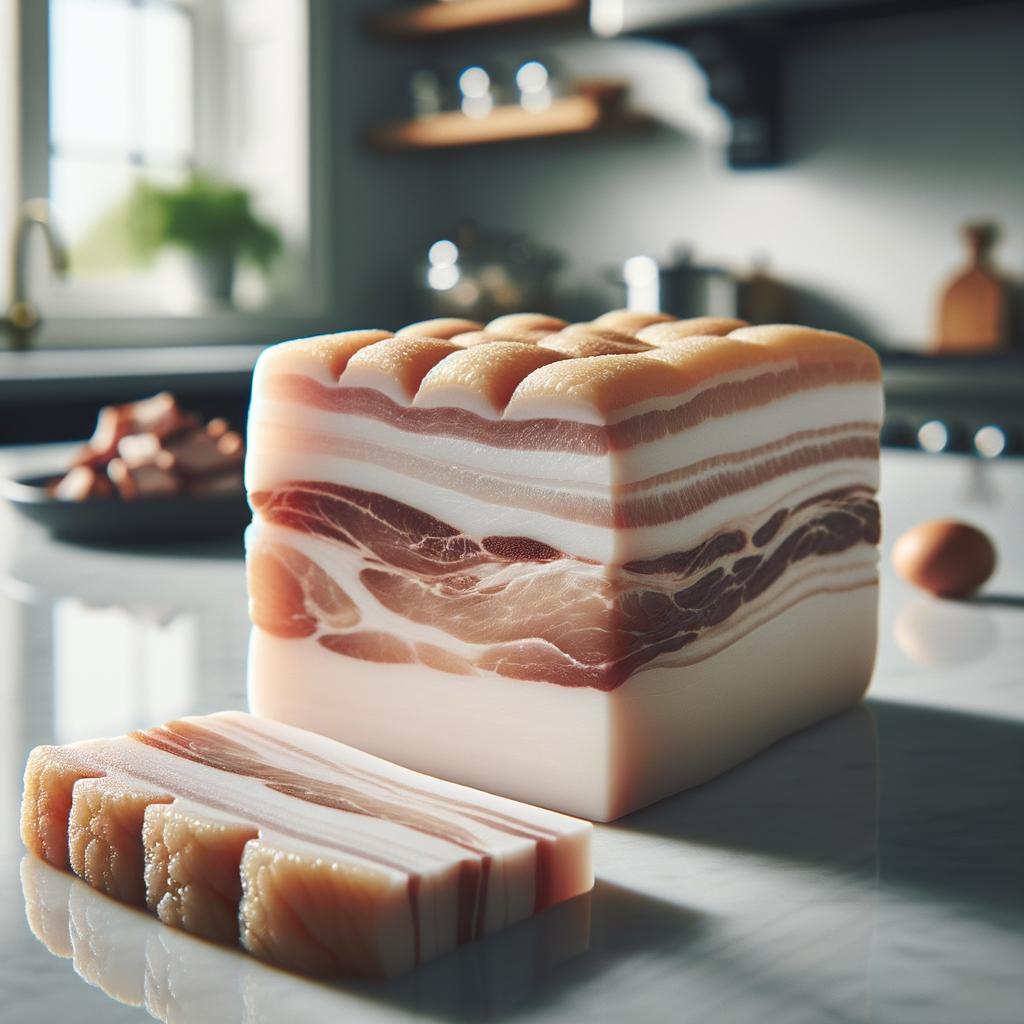Pork Back Fat

Description
Pork back fat, as the name suggests, is the layer of fat that sits on the back of a pig, beneath the skin and above the muscles. It's a thick, dense layer, often with a hint of pinkish hue, and when cooked, it melts down into a clear, golden liquid. The texture is firm yet pliable when raw, and when cooked, it renders down into a rich, silky substance. The flavor profile is robust and meaty, with a depth that adds a hearty touch to any dish it graces. What sets pork back fat apart from other animal fats is its high smoke point and its ability to impart a unique, savory flavor that is both rich and satisfying.
Primary Uses
In culinary arts, pork back fat is a cherished ingredient, particularly in charcuterie. It's used to create luscious sausages, pâtés, and terrines, where its fat content contributes to a moist, flavorful result. It's also rendered down to produce lard, a key ingredient in many traditional pastry recipes. In cuisines such as Italian and Eastern European, it's used to add richness to dishes like pasta, stews, and roasts. Beyond the kitchen, pork back fat has been used in traditional medicine for its high energy content, and it holds cultural significance in many societies where pig rearing is common.
History
The history of pork back fat is as rich and varied as its flavor. It has been a staple in human diets since prehistoric times, particularly in colder climates where high-fat foods were essential for survival. In the Middle Ages, it was a valuable commodity, often used as a form of currency. Over time, its use in cooking evolved, with chefs discovering its ability to enhance flavor and texture in a variety of dishes. There are many folklores associated with pork back fat, such as the belief in some cultures that consuming it can bring good luck or prosperity.
Nutritional Information
Pork back fat is high in monounsaturated fats, the same heart-healthy fats found in olive oil. It's also a good source of vitamins B1, B2, and B3, and minerals such as zinc and selenium. However, due to its high calorie and fat content, it should be consumed in moderation. When compared to similar ingredients like beef fat or butter, pork back fat has a higher smoke point, making it a safer option for high-heat cooking. Despite the common misconception, when consumed in moderation and as part of a balanced diet, pork back fat can contribute to a healthy, nutrient-rich diet.

